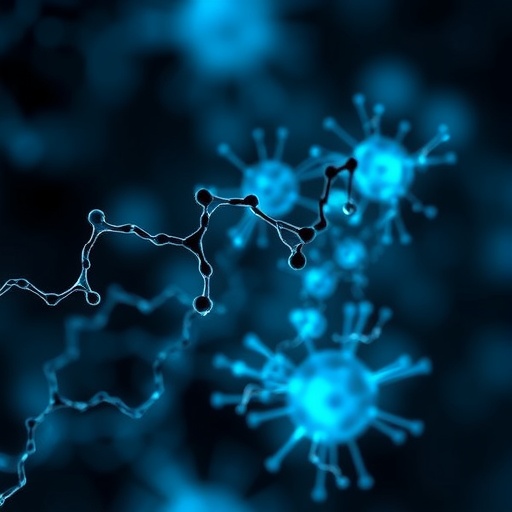
In recent years, the convergence of artificial intelligence and forensic sciences has paved the way for groundbreaking advancements in age estimation techniques. A revolutionary study conducted by Liang, Wang, Wen, and colleagues, published in the International Journal of Legal Medicine in 2025, introduces a novel method for dental age inference employing the combined strengths of multiple machine learning algorithms. This innovative approach is designed specifically to address the enduring challenge of accurately estimating the dental age of children, particularly those with missing teeth, a demographic that has consistently presented difficulties for forensic experts and pediatric dentists alike.
Traditional methods for dental age estimation often rely on either morphological examination or radiographic analysis of teeth development stages. However, these standard approaches encounter significant limitations when key teeth are absent, either congenitally or due to early loss, which is common in certain populations. Inadequate or incomplete dentition data can lead to substantial estimation errors, compromising legal investigations, clinical decisions, and anthropological research. The study by Liang and colleagues undertakes the ambitious task of mitigating these issues by leveraging advanced machine learning techniques capable of synthesizing incomplete dental data into precise age predictions.
The research focuses on a southern Chinese pediatric population, which presents unique anatomical and developmental characteristics necessitating a tailored solution. By compiling a comprehensive dental dataset encompassing a range of developmental stages—including cases with missing teeth—the team trained a suite of machine learning models, combining their outputs to enhance robustness and accuracy. These algorithms include decision trees, support vector machines, and gradient boosting frameworks, each contributing distinct analytical strengths to the unified model.
One of the remarkable aspects of this study lies in the ensemble learning strategy that the researchers employed. Ensemble methods, by aggregating predictions from multiple underlying models, typically outperform any single model by reducing bias and variance in estimations. Liang et al. harnessed this principle to compensate for the variability introduced by missing teeth data, ultimately achieving superior predictive performance compared to classical single-algorithm approaches.
The dataset featured detailed radiographic measurements and clinical assessments of dental eruption, cusp formation, and root development stages, forming high-dimensional input features for the learning algorithms. The team meticulously preprocessed these inputs, addressing class imbalance and missingness within the data using imputation techniques aligned with biological plausibility. This preprocessing ensured that the model training was resilient to data sparseness and noise, critical factors for maintaining reliability in forensic applications.
Validation of the proposed model was conducted using separate test samples from the same regional population, confirming its generalizability and practical utility. The reported mean absolute errors in age estimation were significantly reduced compared to traditional Demirjian or Willems methods, which have been gold standards in dental age assessment. Notably, the algorithm maintained remarkable precision even in cases with multiple missing teeth, demonstrating its robustness.
From a technical perspective, the study offers profound insights into the integration of heterogeneous machine learning models for biomedical research. By automating feature extraction and optimizing hyperparameters through grid search and cross-validation techniques, the research team eliminated much of the human bias that typically influences such analyses. This automation paves the way for scalable and replicable methods in age estimation, adaptable to diverse populations and forensic contexts.
Moreover, the implications of such an approach extend beyond forensic medicine into pediatric healthcare and epidemiology. Accurately determining dental age has critical importance in diagnosing growth disorders, planning orthodontic treatments, and even in legal scenarios where chronological age verification influences status and rights. The presented model offers a non-invasive, data-driven alternative that can be employed efficiently in clinics and forensic units equipped with digital radiographic capabilities.
The authors also delved into the ethical considerations surrounding machine learning applications in forensic science, emphasizing transparency, data privacy, and the importance of interdisciplinary collaboration. They underscored that predictive accuracy must be balanced with careful interpretation within a medico-legal context, ensuring that AI-driven inferences support rather than supplant expert judgment.
Beyond the scientific and medical implications, this study exemplifies the transformative power of AI in solving complex, real-world problems. The innovative fusion of machine learning models not only circumvents limitations posed by missing data but also establishes new standards for precision in age estimation. This landmark research invites further exploration into how AI can revolutionize other aspects of forensic anthropology, such as skeletal analysis and population identification.
The findings from Liang and colleagues’ work offer compelling evidence that computational intelligence can bridge gaps left by traditional methods, making age estimation more inclusive and accurate for diverse pediatric populations. Their approach exemplifies the cutting-edge intersection of data science, medicine, and forensic investigation, setting a precedent for future research endeavors focused on leveraging AI for human developmental assessment.
In summary, the study represents a significant leap forward in the forensic application of dental age estimation by integrating multiple machine learning algorithms into a cohesive predictive framework that effectively handles missing tooth data. This advancement holds promise for enhancing the accuracy of age-related determinations critical for legal, medical, and anthropological disciplines, particularly in regions with distinct population-specific dental patterns.
As AI continues to permeate various disciplines, such innovative methodologies underscore the necessity of multidisciplinary expertise encompassing data science, dentistry, and forensic medicine. The emergent algorithms trained on region-specific datasets could potentially be adapted globally, prompting a new era of personalized forensic assessments that respect demographic and biological diversity.
Overall, the study by Liang and colleagues is a testament to how machine learning can deliver practical, high-impact solutions by addressing longstanding challenges in biological age determination. Their research sets a new standard for dental age inference and opens promising avenues for integrating AI-driven analytics into forensic practice, ultimately enhancing the quality and reliability of this critical investigative tool.
Subject of Research: Dental age estimation in children with missing teeth using combined machine learning algorithms
Article Title: Combining machine learning algorithms to construct a new method for inferring dental age of children with missing teeth in southern China
Article References:
Liang, X., Wang, C., Wen, D. et al. Combining machine learning algorithms to construct a new method for inferring dental age of children with missing teeth in southern China. Int J Legal Med (2025). https://doi.org/10.1007/s00414-025-03591-2
Image Credits: AI Generated
Tags: advanced algorithms for dental analysisartificial intelligence in age estimationchallenges in dental age assessmentdental age estimation techniquesestimating age with missing teethforensic science and AI convergenceinnovative methods for pediatric dentistrylimitations of traditional dental age methodsmachine learning applications in healthcaremachine learning in forensic dentistrypediatric dental age inferenceresearch on dental age in children




